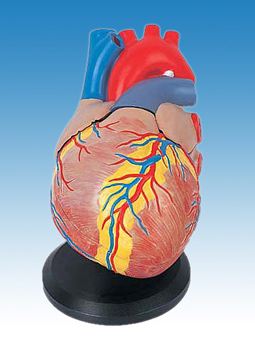January 19, 2009
Assessing Your Risk Of Coronary Heart Disease (CHD): Going Beyond Traditional Methods

By Michael D. Shaw
Any interested person (aged 20 and older who does not have heart disease or diabetes) can use a web-based calculator—developed by the the National Heart, Lung, and Blood Institute (NHLBI)—to determine their ten-year risk of developing “hard CHD” (Myocardial Infarction and Coronary Death).
The user need only input
- Age
- Gender
- Total cholesterol
- HDL cholesterol
- Smoker/non-smoker status
- Systolic blood pressure
- Blood pressure medication status
and the risk factor (also known as the Framingham risk estimate) is calculated instantly.
But, how well does this tool correlate with actual clinical measurements of atherosclerotic plaque in real individuals? A group of radiologists, led by Dr. Kevin Johnson of the Yale University School of Medicine, decided to check. Their results were published in the January issue of the American Journal of Roentgenology, in an article entitled “Traditional Clinical Risk Assessment Tools Do Not Accurately Predict Coronary Atherosclerotic Plaque Burden: A CT Angiography Study.”
As you can deduce from the article’s title, the tool does not work as well as we might hope. Or to put it another way, risk factor assessment might be great when looking at populations of patients, but are poor predictors for individual risk, or as a guide to individual treatment.
According to the article:
“As the cholesterol hypothesis of atherosclerosis rose to prominence, the risk factor approach rose with it, culminating in an entire clinical strategy centered around achieving a serum low-density lipoprotein (LDL) cholesterol target under the National Cholesterol Education Program/Adult Treatment Panel III guidelines. However, evidence is accumulating that risk factor analysis has substantial limitations when used to guide individual therapy.”
The study examined 1,653 patients (1,089 men, 564 women; mean age, 51.6 ± 10.5 years), with no history of CHD. The most common indications for the exam included hypercholesterolemia (high blood cholesterol), a family history of heart disease, hypertension, smoking, and atypical chest pain. 738 of these subjects were taking statins (cholesterol lowering drugs), based on previous assessment of risk.
The results indicated that 31% of men and 46% of women had no detectable plaque. 11.6% had exclusively noncalcified plaque, a type generally undetectable by other means including cardiac stress tests.
Additionally, 21% of the patients who would have been thought to need statin drugs—based on the assessment tool run just before the coronary computed tomography angiogram (CTA) was performed—did not require them. And, 26% of the patients already on statins had not detectable plaque at all.
As the study noted…
“Both risk factor analysis and plaque imaging have been proposed as important tools in risk assessment; however, the results of our study show significant discordance between them. Using risk factors alone, many patients with little or no plaque would be consigned to lifelong drug therapy, while others with substantial plaque would be left untreated.”
A few other cogent remarks from Dr. Johnson:
“Risk assessment tools are used by physicians implicitly. Physicians use them as a way to separate and treat patients accordingly. Ultimately, the Framingham influences what every physician does, but I feel it is not good enough to show what is happening with each individual patient.”
“The average person tends to put a lot of weight on family history, but the association between that and coronary heart disease is only modest. We are living in an era where genetic research is in the headlines, but reality is a lot more complicated than that.”
And, finally this uncomfortable point:
“There are still 400,000 people a year who die from heart attacks and have no warning signs at all; doctors want to be able to find those people before that happens and I hope this study gets people interested in finding out better predictors for coronary heart disease.”
While coronary CTA seems to provide the best results, can we really justify the expense to employ it as general screening tool? Still, it seems clear that improved risk assessment tools are needed, given the flaws uncovered by this single study. Prevention, though, has never been a high priority in health care, but during these days of economic turmoil, it’s looking better all the time.

